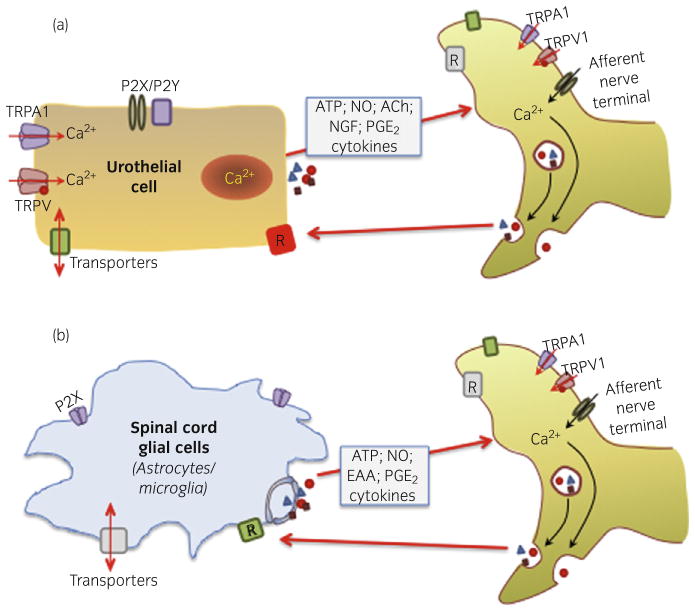Fig. 1.
Hypothetical model showing possible bi-directional interactions between non-neuronal cells (A-urothelium; B-spinal cord glial cells) and nerves. Both urothelial cells and glial cells can be targets for transmitters and mediators released from nerves. In turn, these non-neuronal cells can release a number of mediators that can alter the responsiveness (or excitability) of sensory nerves. This suggests that non-neuronal cells might have the ability to change the gain of the system, thereby altering sensory functions.

